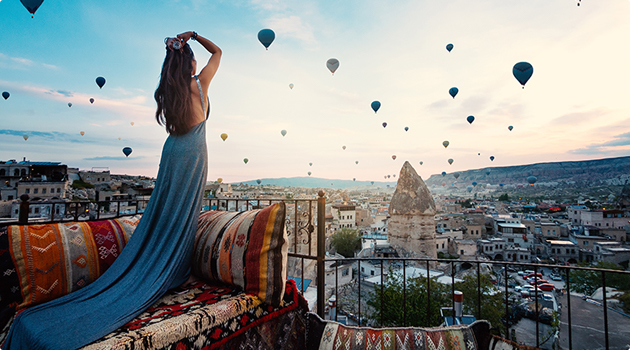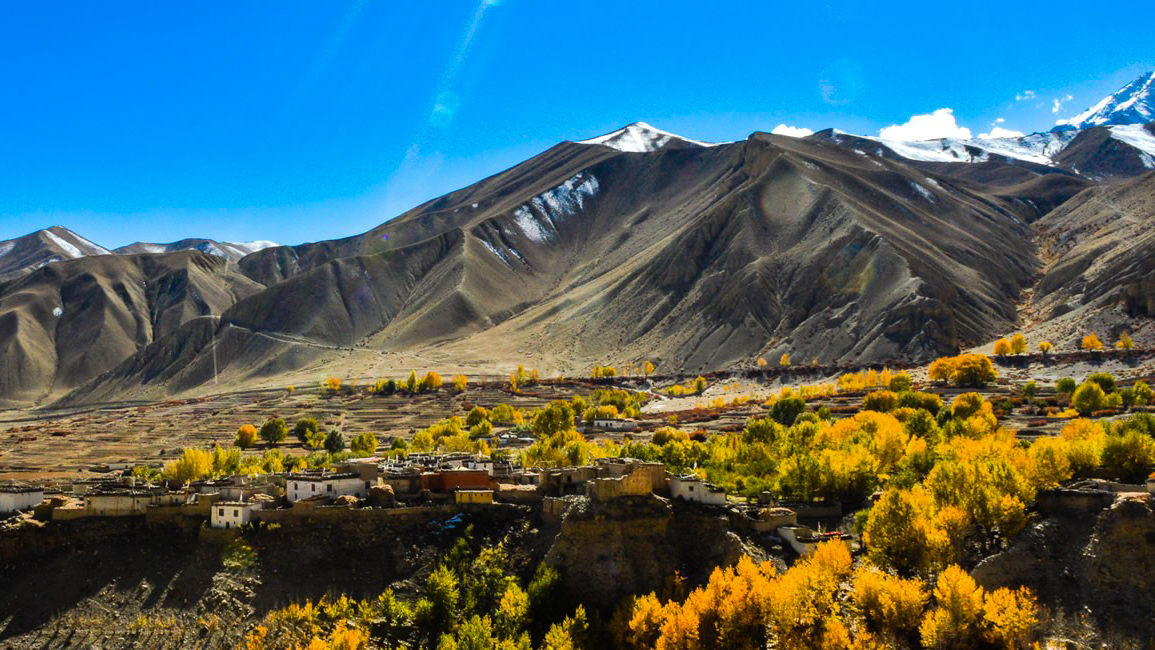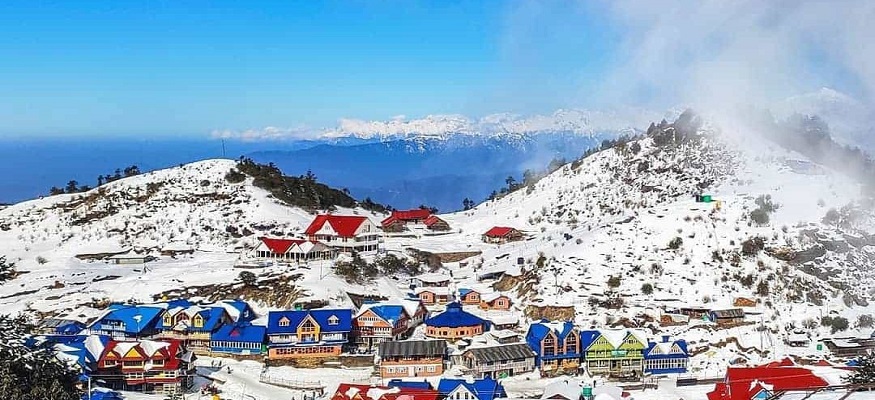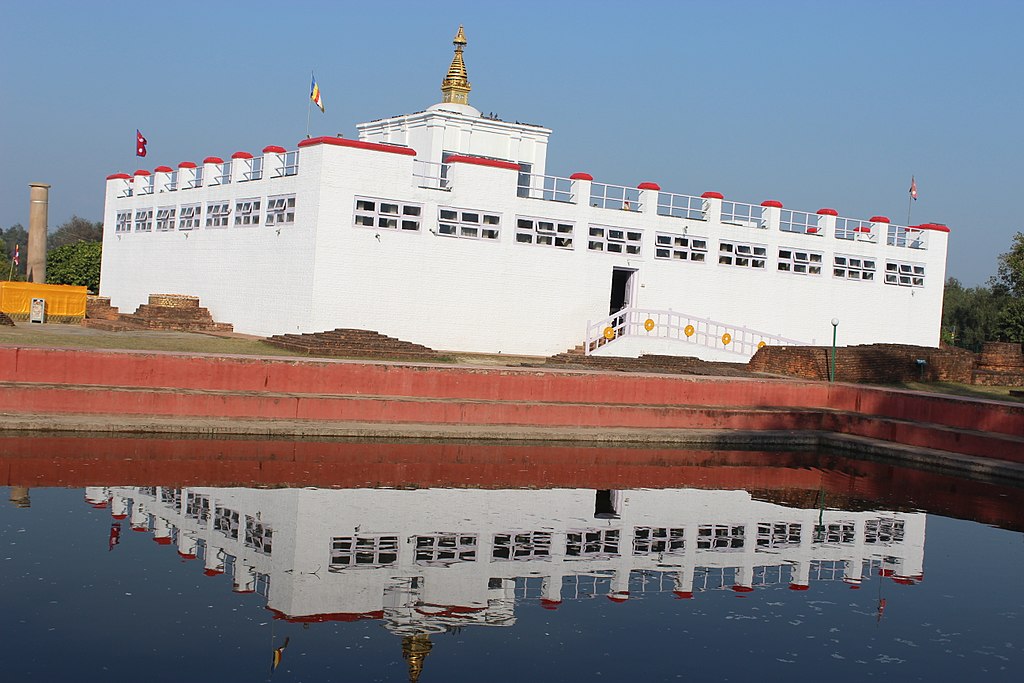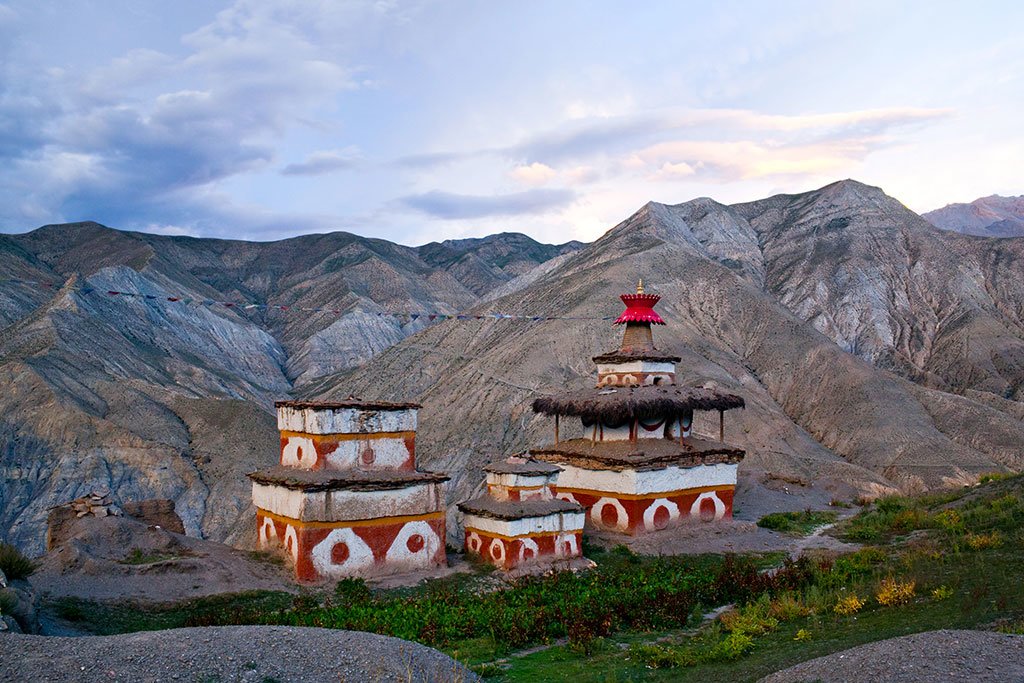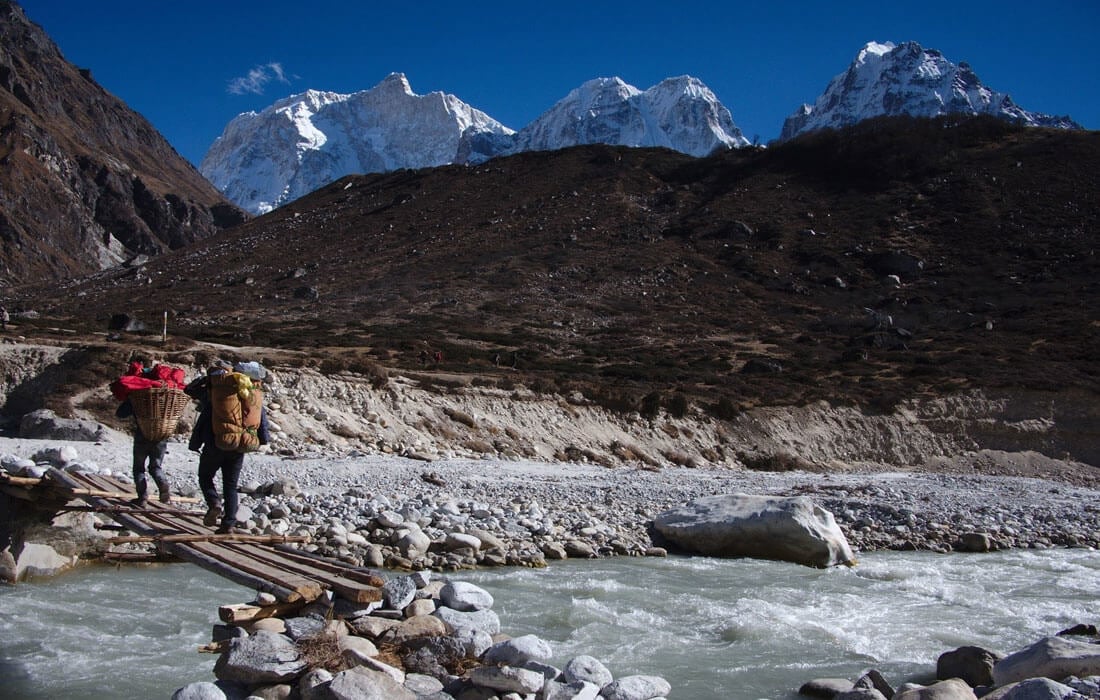 About this Trip
About this Trip
The Jomsom Muktinath Trek represents a perfect introduction to the dramatic landscapes and cultures of Nepal's trans-Himalayan regions, offering what many experienced guides consider an ideal balance of accessibility, diversity, and cultural richness. What makes this trek exceptional is its ability to deliver the essence of a high-mountain Himalayan experience without the extended timeframe and extreme altitudes required by many of Nepal's famous trekking routes.
The trek follows the ancient trade route that once connected the Tibetan plateau with the lowlands of Nepal and India, traversing the remarkable Kali Gandaki gorge between the towering massifs of Annapurna and Dhaulagiri. This historic pathway creates a journey of continuous visual drama, as trekkers experience the stark beauty of an arid landscape sculpted by wind and water over millennia, with colorful sedimentary layers exposed in eroded cliff faces and vast gravel plains stretching between settlements. The daily rhythm of powerful afternoon winds sweeping up the valley becomes a defining feature of the experience, a natural phenomenon that has shaped both the physical landscape and the cultural adaptations of communities in the region.
The cultural dimension of this trek is particularly extraordinary. The region exists at a fascinating crossroads where Hindu and Buddhist traditions have intermingled for centuries, creating unique syncretic practices visible in temples, villages, and daily life. Architecture transitions from typical Nepali styles in the south to distinctly Tibetan-influenced structures with flat roofs, whitewashed walls, and decorative elements that reflect the arid climate and cultural connections to Tibet. The Thakali people of the central valley are renowned for their entrepreneurial spirit and distinctive cuisine, while settlements closer to Muktinath showcase stronger Tibetan cultural influences in dress, religious practices, and social organization.
Physically, the trek presents a comfortable challenge accessible to reasonably fit trekkers without specialized mountaineering skills. Daily walking segments generally range from 5-6 hours over varied terrain, with gradual ascents and descents rather than the extreme elevation changes that characterize many Himalayan journeys. The highest point at Muktinath (3,800m) requires some acclimatization but remains below the threshold where severe altitude sickness becomes a common concern, making the route suitable for trekkers with limited high-altitude experience.
Perhaps most distinctively, the Jomsom Muktinath trek offers exceptional flexibility in itinerary design. The availability of flights into Jomsom and jeep transportation on sections of the route allows trekkers to customize their journey based on available time, physical preferences, and specific interests. This adaptability makes the trek accessible to a wider range of travelers than many Nepali trekking routes, from those seeking a short introduction to Himalayan landscapes to enthusiasts wishing to explore the region's cultural and natural dimensions in greater depth.
This combination of dramatic landscapes, cultural richness, physical accessibility, and itinerary flexibility creates what many consider the perfect "sampler" of Nepal's trans-Himalayan regions, delivering a genuinely rewarding mountain experience without requiring weeks of commitment or extreme physical challenges.
The Jomsom Muktinath Trek represents a perfect introduction to the dramatic landscapes and cultures of Nepal's trans-Himalayan regions, offering what many experienced guides consider an ideal balance of accessibility, diversity, and cultural richness. What makes this trek exceptional is its ability to deliver the essence of a high-mountain Himalayan experience without the extended timeframe and extreme altitudes required by many of Nepal's famous trekking routes.
The trek follows the ancient trade route that once connected the Tibetan plateau with the lowlands of Nepal and India, traversing the remarkable Kali Gandaki gorge between the towering massifs of Annapurna and Dhaulagiri. This historic pathway creates a journey of continuous visual drama, as trekkers experience the stark beauty of an arid landscape sculpted by wind and water over millennia, with colorful sedimentary layers exposed in eroded cliff faces and vast gravel plains stretching between settlements. The daily rhythm of powerful afternoon winds sweeping up the valley becomes a defining feature of the experience, a natural phenomenon that has shaped both the physical landscape and the cultural adaptations of communities in the region.
The cultural dimension of this trek is particularly extraordinary. The region exists at a fascinating crossroads where Hindu and Buddhist traditions have intermingled for centuries, creating unique syncretic practices visible in temples, villages, and daily life. Architecture transitions from typical Nepali styles in the south to distinctly Tibetan-influenced structures with flat roofs, whitewashed walls, and decorative elements that reflect the arid climate and cultural connections to Tibet. The Thakali people of the central valley are renowned for their entrepreneurial spirit and distinctive cuisine, while settlements closer to Muktinath showcase stronger Tibetan cultural influences in dress, religious practices, and social organization.
Physically, the trek presents a comfortable challenge accessible to reasonably fit trekkers without specialized mountaineering skills. Daily walking segments generally range from 5-6 hours over varied terrain, with gradual ascents and descents rather than the extreme elevation changes that characterize many Himalayan journeys. The highest point at Muktinath (3,800m) requires some acclimatization but remains below the threshold where severe altitude sickness becomes a common concern, making the route suitable for trekkers with limited high-altitude experience.
Perhaps most distinctively, the Jomsom Muktinath trek offers exceptional flexibility in itinerary design. The availability of flights into Jomsom and jeep transportation on sections of the route allows trekkers to customize their journey based on available time, physical preferences, and specific interests. This adaptability makes the trek accessible to a wider range of travelers than many Nepali trekking routes, from those seeking a short introduction to Himalayan landscapes to enthusiasts wishing to explore the region's cultural and natural dimensions in greater depth.
This combination of dramatic landscapes, cultural richness, physical accessibility, and itinerary flexibility creates what many consider the perfect "sampler" of Nepal's trans-Himalayan regions, delivering a genuinely rewarding mountain experience without requiring weeks of commitment or extreme physical challenges.

From $0
Price Varies from Group Size
Success
Here goes about why the success toast occurred.
 Itinerary
Itinerary
Arrival in Kathmandu (1,400m)
Kathmandu to Pokhara (820m)
Pokhara to Jomsom (2,720m) to Kagbeni (2,810m)
Kagbeni to Muktinath (3,800m)
Muktinath to Jhong to Jomsom (2,720m)
Jomsom to Marpha (2,680m)
Marpha to Kalopani (2,530m)
Kalopani to Tatopani (1,190m)
Tatopani to Ghorepani (2,840m)
Ghorepani to Poon Hill (3,210m) to Nayapul (1,070m) to Pokhara
Pokhara
Pokhara to Kathmandu
Departure from Kathmandu
 Services
Services
Includes
- Specialized bilingual guide familiar with the Jomsom Muktinath region
- Private Transport where applicable
- Flight from Pokhara to Jomsom
- Daily meals on the trek: breakfast, lunch, and dinner
- Services of an experienced guide and porter during the trek
- All essential trekking permits, including ACAP (Annapurna Conservation Area Permit) and TIMS
- Accommodation throughout the trek (teahouses)
Excludes
- Additional accommodation due to weather delays (particularly flight delays to/from Jomsom)
- Comprehensive travel and medical insurance for the trek
- Gratuities for the guides, porters, and trekking support staff
- International flights and entry visa fees for Nepal
- Personal trekking equipment and gear (sleeping bags, jackets, etc.)
- Extra food and drinks beyond the standard meals provided
- Hot showers and battery charging at teahouses (pay per use)
- Costs associated with emergency evacuation or alternate transportation if needed
- Temple entrance fees at Muktinath
 Good To Know
Good To Know
The infamous winds of the Kali Gandaki valley blow strongly from late morning through the afternoon; start walking early when possible and bring sunglasses and a buff/scarf for wind protection. Flights to Jomsom operate only in early morning before winds strengthen and can be delayed by weather, so build buffer days into your schedule. The trek can be done in reverse (starting with a trek up to Ghorepani and ending with a flight from Jomsom) or shortened by using jeep transportation for certain sections. The region is significantly drier than most Nepal trekking areas; moisturizer and lip balm are essential. ATMs are available in Jomsom but become scarce elsewhere; carry sufficient cash. Muktinath is an important pilgrimage site; dress respectfully when visiting the temple complex (shoulders and knees covered). The trek's relatively moderate altitude makes altitude sickness less concerning than on higher treks, but proper hydration remains important. Teahouse facilities are relatively good throughout this route compared to more remote treks. Consider bringing a small souvenir from your home country for your host family in homestays.
Wildlife Encounters
Himalayan griffon vultures soaring on thermal currents
Lammergeier (bearded vulture) with impressive wingspans
Various species of eagles and hawks
Choughs and crows adapted to high elevations
Blue sheep (bharal) on rocky slopes in higher regions
Pika (small rabbit-like mammals) in rocky areas
Marmots whistling from rocky outcrops
Diverse butterfly species in lower forested regions
Lizards and small reptiles in the arid zones
Various small bird species adapted to different ecological zones
Domesticated yaks and yak-cow hybrids (dzo) in higher villages
 Reviews
Reviews
 FAQs (Frequently Asked Questions)
FAQs (Frequently Asked Questions)
Your queries are answered.
How physically demanding is the trek?
Easy to moderate difficulty suitable for reasonably fit beginners. Daily hiking: 4-7 hours with some significant ascents/descents, particularly from Tatopani to Ghorepani. Maximum altitude (3,800m) requires basic acclimatization but is lower than many Himalayan treks.
Best time to visit?
September-November offers clearest mountain views and stable weather. March-May brings pleasant temperatures and wildflowers in lower regions. A major advantage is it remains trekable during monsoon (June-August) when other routes are problematic due to its rain shadow location.
How reliable are Jomsom flights?
Flights operate only in the early morning before valley winds strengthen. Delays and cancellations are common, especially during peak tourist seasons. Build buffer days into your itinerary and consider alternative transportation options like jeeps.
What permits are needed?
Annapurna Conservation Area Permit (ACAP, approximately $30) and TIMS (Trekkers' Information Management System) card (approximately $10), obtainable through trekking agencies or in Kathmandu/Pokhara.
Accommodation quality?
Generally better than many trekking regions with relatively well-developed facilities. Private rooms with basic beds and blankets, shared bathrooms, and dining areas serving varied menus. Electricity and sometimes WiFi available in larger villages.
Can the itinerary be shortened?
Yes, highly adaptable. Common variations include flying both ways, using jeep transportation for sections, or focusing on specific highlights. Can be completed in as few as 5 days with strategic transportation use.
Altitude sickness risk?
Lower than many Himalayan treks. Maximum elevation at Muktinath (3,800m) requires basic acclimatization but is below the threshold where severe altitude problems typically occur.
Food variety?
Excellent by trekking standards. Traditional dal bhat (rice and lentils), Tibetan dishes like momos (dumplings) and thukpa (noodle soup), and increasingly Western options. Marpha's apple products including juice, brandy, and pies are regional specialties.
Cultural highlights not to miss?
Muktinath temple complex with ritual bathing fountains. Kagbeni's medieval Tibetan-influenced village. Marpha's traditional architecture and apple distillery. Local festivals if timing aligns. Traditional weaving and seasonal agricultural activities. Monastery visits in several villages.
